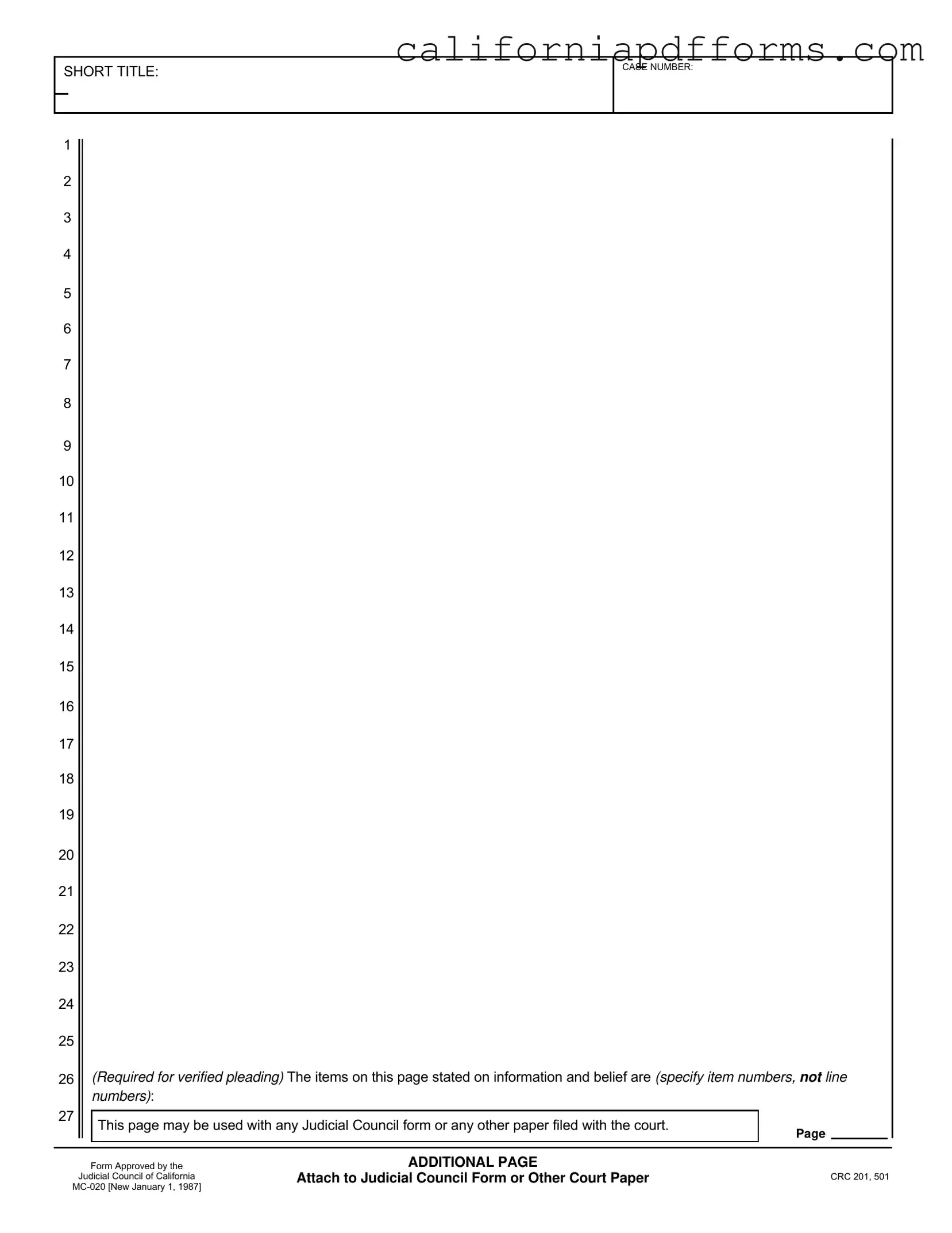The California Judicial Council form serves to standardize the way information is presented in court documents. It ensures that all necessary details are included and clearly organized, making it easier for judges and court staff to process cases. This form can be used in conjunction with other court papers, allowing for additional information to be provided as needed.
To fill out the form, begin by entering the short title and case number at the top. Next, specify the items you are providing information about, using the item numbers rather than line numbers. It is essential to provide accurate information based on your knowledge or belief. If more space is needed, you may attach additional pages to the form.
Yes, this form is designed to be versatile. You can attach it to any Judicial Council form or other court documents. This flexibility allows you to provide supplementary information relevant to your case, ensuring that all necessary details are communicated effectively.
Is there a specific format for the additional pages?
While the form itself has a specific structure, the additional pages do not require a strict format. However, it is advisable to maintain clarity and organization. Clearly label the additional pages and reference them in the main form to indicate their relevance. This helps the court staff understand the context of the information provided.
If you make a mistake while filling out the form, you should correct it as soon as possible. Cross out the incorrect information and write the correct details next to it. Alternatively, if the mistake is significant, you may choose to complete a new form. Ensure that any changes are clearly visible to avoid confusion.
The California Judicial Council form can be obtained online through the California Courts website. Additionally, copies are available at local courthouses. It is important to ensure that you are using the most current version of the form, as updates may occur.
